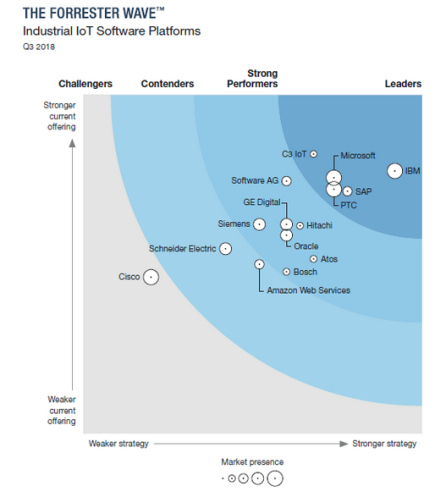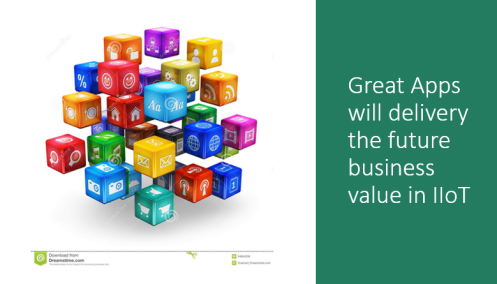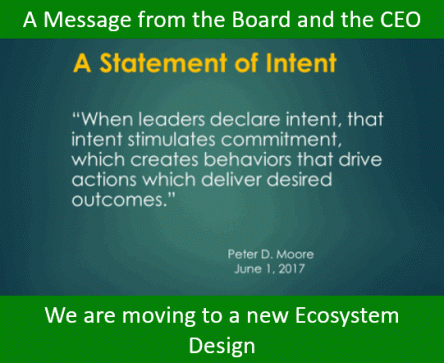 In June 2018 we saw that Rockwell Automation (ROK) made a $1 Billion investment into PTC that will give Rockwell just under a 9% ownership interest in PTC. I decided to wait to look at this. Now here is the time for a review eight months later.
In June 2018 we saw that Rockwell Automation (ROK) made a $1 Billion investment into PTC that will give Rockwell just under a 9% ownership interest in PTC. I decided to wait to look at this. Now here is the time for a review eight months later.
I have made initial snapshots (all separate links) on Schneider Electric, Bosch, GE, Siemens, ABB, Alibaba and Baidu to look a little deeper at their platform offerings. I still have to dig into Azure and AWS sometime but this partnership of a leading software provider in the IoT space and Rockwell, dedicated to industrial automation takes precedence, as my primary focus is on platforms and ecosystems in business IIoT.
Rockwell had not responded up to this point in a strategic way to the very strong pushes, led by their largest competitor, Siemens on IIoT platforms. Siemens has been building their Mindsphere offering in their own unique purposeful ways.
This move and partnership between Rockwell and PTC might change the game significantly. PTC will be supplying a real IIoT backbone of platform components and are rapidly delivering an integrated industrial digitalization solution.
Slapping $1 billion on the table really does potentially transform both businesses.

 Do you know your platform solution?
Do you know your platform solution? I feel 2019 will be a make or break year for the platform providers for IIoT solutions. We are getting a real sense of clarity on who is leading the pack, who is struggling to keep up and some becoming real laggards, that need to change their game dramatically to stay in the platform hunt.
I feel 2019 will be a make or break year for the platform providers for IIoT solutions. We are getting a real sense of clarity on who is leading the pack, who is struggling to keep up and some becoming real laggards, that need to change their game dramatically to stay in the platform hunt. Software stacks. This conquers up a certain mystery for me, so I decided to order up a plate to see if I can digest all they seem to be offering.
Software stacks. This conquers up a certain mystery for me, so I decided to order up a plate to see if I can digest all they seem to be offering. Ecosystems in our business thinking have suddenly become of age, they can enable cross-cutting innovation to be delivered in highly collaborative and dynamic ways. Understanding the value of working within an ecosystem is becoming critical to understand.
Ecosystems in our business thinking have suddenly become of age, they can enable cross-cutting innovation to be delivered in highly collaborative and dynamic ways. Understanding the value of working within an ecosystem is becoming critical to understand. There are twin forces at work, feeding off each other and innovation can become the greater unifier. We are facing greater disruption and an increasing innovation and technology pace. These are constantly combining, relentlessly adding a new shape to our future. We are actually caught up in a very revolutionary period.
There are twin forces at work, feeding off each other and innovation can become the greater unifier. We are facing greater disruption and an increasing innovation and technology pace. These are constantly combining, relentlessly adding a new shape to our future. We are actually caught up in a very revolutionary period.
 Technology is radically altering our need for innovation. We see increasingly innovation is feeding off the “digital response rate” and how we build and design the application software will transform IIoT as it has for our personal world (B2C), where we download apps on a daily basis to solve a problem or to improve our understanding.
Technology is radically altering our need for innovation. We see increasingly innovation is feeding off the “digital response rate” and how we build and design the application software will transform IIoT as it has for our personal world (B2C), where we download apps on a daily basis to solve a problem or to improve our understanding. Ecosystems have become a really hot topic. As we gain the understanding of what a dual strategy approach to what our business could look like, you need to recognize what you still need control of, those you call your core assets. Yet at the same time, to explore and expand out more today we need to build better external collaborative approaches.
Ecosystems have become a really hot topic. As we gain the understanding of what a dual strategy approach to what our business could look like, you need to recognize what you still need control of, those you call your core assets. Yet at the same time, to explore and expand out more today we need to build better external collaborative approaches.